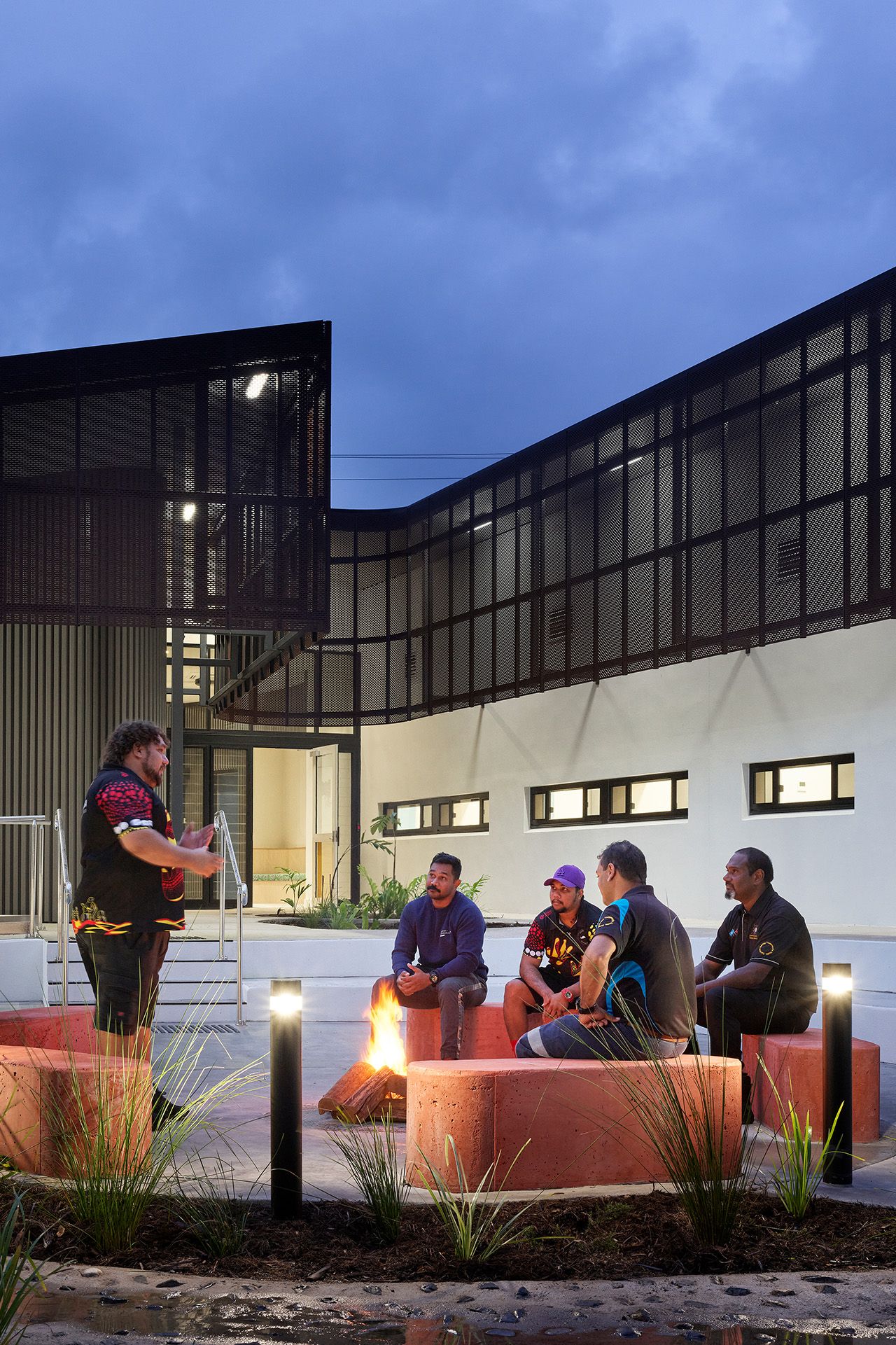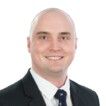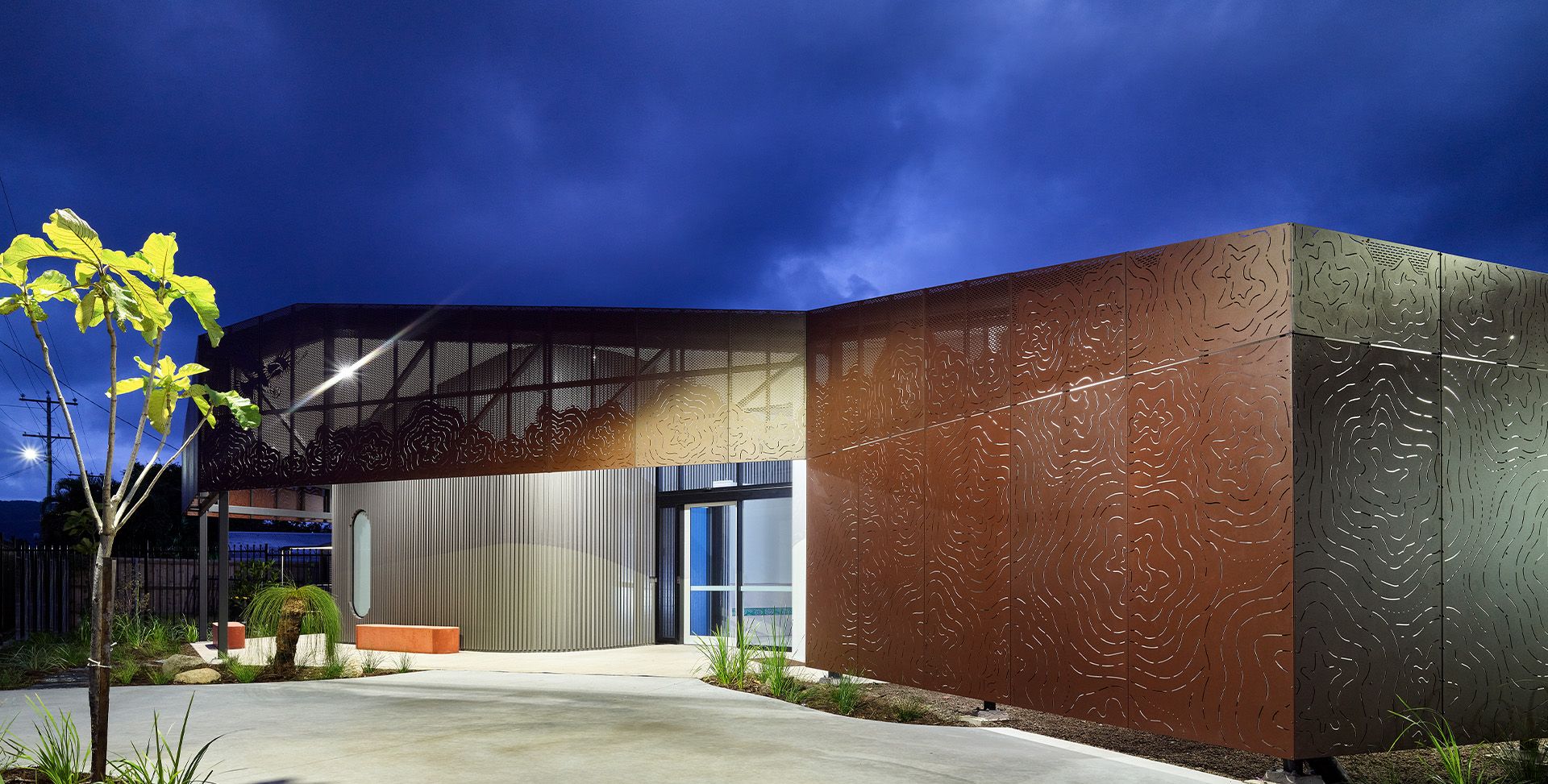GURRINY YEALAMUCKA HEALTH AND WELLBEING CENTRE
Gurriny Yealamucka means “good healing waters” in the language of the Gunggandji peoples – and the health service that bears its name is a place that helps the people of Yarrabah in Far North Queensland to heal and reconnect with Country.
In 2021, when the Gurriny Yealamucka Health and Wellbeing Centre on Workshop Street first opened its doors, it bore little resemblance to a typical health centre. Missing were the institutional finishes, long corridors and enclosed spaces that are common to healthcare design. Instead, people were enfolded in the welcoming embrace of a building that echoes the culture, landscape and identity of the community it serves.
At a glance
- ClientGurriny Yealamucka Health Service Aboriginal Corporation
- ServicesCost Management & Quantity Surveying
- sectorHealthcare
- LocationYarrabah, Australia
Listening and learning to help people write their own story
RLB’s presence in North Queensland stretches back to 1973. Since then, RLB’s team has been part of the teams delivering the region’s biggest projects – but it’s often the smallest ones that have the biggest impact. Projects in remote regions often incur a price premium – but with careful cost management, can also add an extra layer of value to local communities.
From the landscape design to the façade artwork to the building contractor, this project was a collaboration with the First Nations people of Yarrabah. The result is a modern and culturally appropriate facility for the Yarrabah community.Brad Bell, Manager, RLB
First Nations building contractor HC Building and Construction engaged local trainees and Indigenous suppliers and sub-contractors, with the economic spend from Indigenous suppliers amounting to 8.7% of the budget or almost $220,000. What’s more, the builder delivered on time and budget – a credit to everyone involved.
The theme of ‘good healing waters’ flows through the building
Designed by People Oriented Design (POD) and Coburn Architecture, the centre is more like a wellbeing retreat than a health centre. The materials palette was carefully selected to mirror the turquoise ocean, the lush green rainforest and the ochre found on the wingtips of Yarrabah’s protector, Guyala the sea hawk.
POD’s Belinda Allwood and Coburn Architecture’s Alanna Coburn “cracked open” the building so those inside could look directly to the spectacular ranges behind or maintain sightlines to the sea. A yarning circle – a gathering place for stories to be told and knowledge shared – and a bush tucker garden are special features. And Guyula is etched into the building’s rust-coloured façade in a design by acclaimed local artists Wayne Connolly and Philomena Yeatman.
- 3,000strong
community supported by its services
- 100+
staff employed, 70% local to Yarrabah
- 8.7%
of the construction budget spent with Indigenous suppliers
Why spiritual, cultural and physical connections matter
‘Country’ – with a capital C – is an important term used by Indigenous Australians to refer to the land and its spiritual, cultural and physical connections. Country encompasses land, skies and waters, but it is much more than geography. The term also captures complex ideas about law, custom, ancestral knowledge, language, spiritual belief, cultural practice and family. Connection to Country is central to identity and is passed down from generation to generation through story, song and ceremony.
Building on strong foundations
To design with Country, several community organisations were engaged in the design and construction process, including the Yarrabah Arts Centre, the Gunggandji Land and Sea Rangers, the Yarrabah Aboriginal Shire Council, elders’ groups and Traditional Owner representatives, a First Nations building contractor and the client.
“There are many important stakeholders on projects like these, and to do the work well you have to build strong relationships with all of them,” says POD’s Dr Shaneen Fantin. “The key is to value the knowledge that all the different groups can bring. Then a place is not made by one organisation or one funding group, but by everyone.”
Photos © Scott Burrows

FURTHER INFORMATION:



